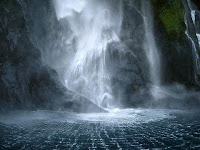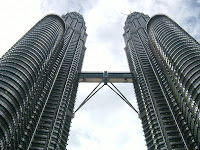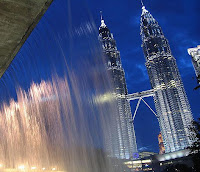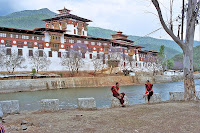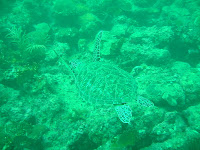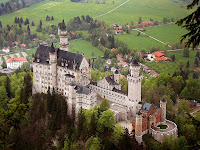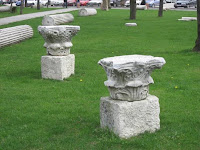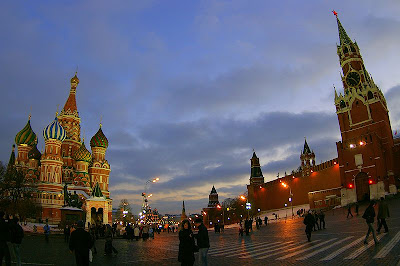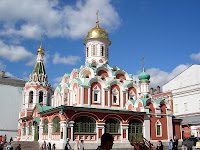The Elbe Sandstone Mountains is a mountain range straddling the border between the state of Saxony in southeastern Germany and the northern Bohemian region of the Czech Republic, with about three by fourth of the area on the German side. The geology of mountains is sandstone. The mountains are also called as Saxon Switzerland and Bohemian Switzerland in both German and Czech. In both countries, the mountain range has been declared a national park. The name derives from the sandstone which was carved by erosion. The river Elbe breaks through the mountain range in a steep and narrow valley.
 The range stretches on both sides of the Elbe from the Saxon town of Pirna in the northwest toward Bohemian Decin in the southeast. Its highest peak with 723 m or 2,372 ft is the Decinsky Snezník in Bohemian Switzerland on the left bank of the river in Bohemian Switzerland north of Decin. The Elbe Sandstone Mountains link the Ore Mountains in the west with the Lusatian Highlands range of the Sudetes in the east. Saxon Switzerland and the Zittau Hills of the Lusatian Mountains form the Saxon-Bohemian Chalk Sandstone Region.
The range stretches on both sides of the Elbe from the Saxon town of Pirna in the northwest toward Bohemian Decin in the southeast. Its highest peak with 723 m or 2,372 ft is the Decinsky Snezník in Bohemian Switzerland on the left bank of the river in Bohemian Switzerland north of Decin. The Elbe Sandstone Mountains link the Ore Mountains in the west with the Lusatian Highlands range of the Sudetes in the east. Saxon Switzerland and the Zittau Hills of the Lusatian Mountains form the Saxon-Bohemian Chalk Sandstone Region.The eroded sandstone of this region presently shapes the landscape which was the sea bottom millions of years ago. Large rivers rinsed sand and decomposition debris into the Cretaceous sea. Rough quartz sand, clay and fine marl sank and solidified themselves layer for layer. A compact sandstone plate developed, about 20 x 30 kilometres wide and up to 600 meters thick.
When the sea left approx 80 million years ago, the mountain forming decay began. At first bursts developed. From the north coming the Lusatian granite massif pushed itself gradually onto the sandstone plate. From the south the lifting mountains of the today’s Ore Mountains caused counter pressure which slanted the brittle sandstone plate and burst it. From the nearly right-angled break lines later the typical, cuboid-like fissure of the Elbe sandstone developed. It is a coveted building materiel, e.g. for the Church of Our Lady in Dresden.

 The Elbe Sandstone mountains have been a popular destination for tourists for more than 200 years, and for climbers for more than 100 years. It is also a popular recreation area for the nearby Saxon capital Dresden. Places of interest include the Bastei cliffs near Rathen, the Konigstein Fortress, Pravcicka brana, the Schrammsteine, Pfaffenstein, and the valleys of the Kirnitzsch and Kamenice rivers. Pravcicka brana is a natural sandstone arch in the Czech part of the Elbe Sandstone Mountains.There are some 14,000 climbing routes via which mountain climbers can conquer 1100 free-standing peaks. Visitors can experience the natural scenes on the asphalt Elbe cycle path, or on board a steam paddleboat that is part of the oldest fleet of its kind in the world.
The Elbe Sandstone mountains have been a popular destination for tourists for more than 200 years, and for climbers for more than 100 years. It is also a popular recreation area for the nearby Saxon capital Dresden. Places of interest include the Bastei cliffs near Rathen, the Konigstein Fortress, Pravcicka brana, the Schrammsteine, Pfaffenstein, and the valleys of the Kirnitzsch and Kamenice rivers. Pravcicka brana is a natural sandstone arch in the Czech part of the Elbe Sandstone Mountains.There are some 14,000 climbing routes via which mountain climbers can conquer 1100 free-standing peaks. Visitors can experience the natural scenes on the asphalt Elbe cycle path, or on board a steam paddleboat that is part of the oldest fleet of its kind in the world.The Elbe Sandstone Mountains have many amenities for treatment and rehabilitation. The region has a belief of many years. The discovery of ferrous and sulphurous sources in Bad Schandau in 1730 led to its growth as a health resort and the building of swimming baths.










